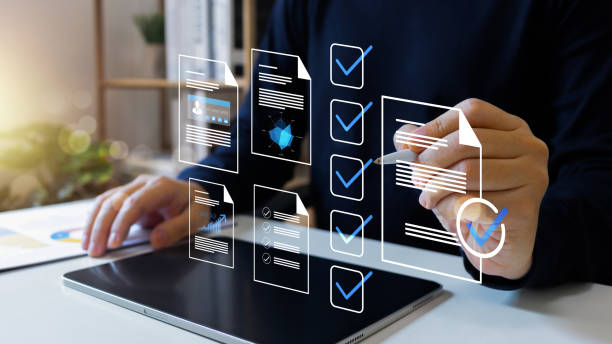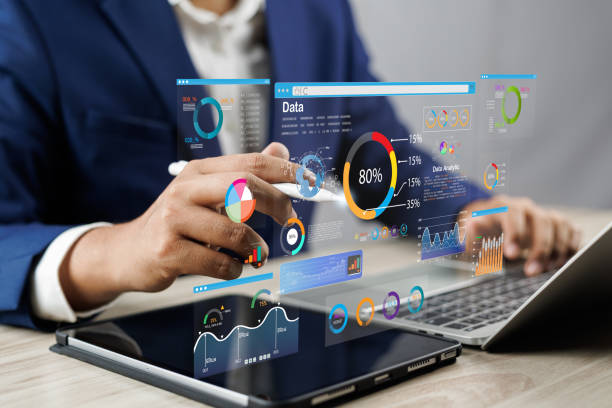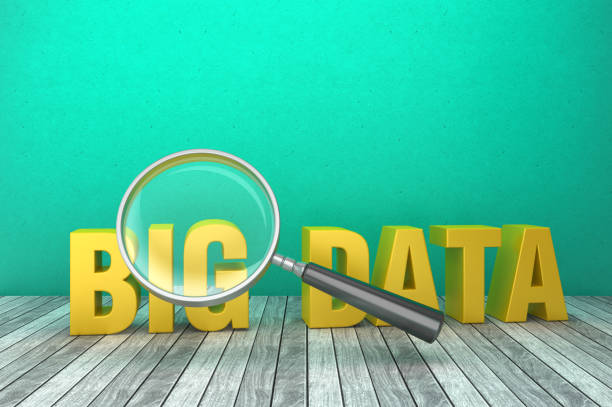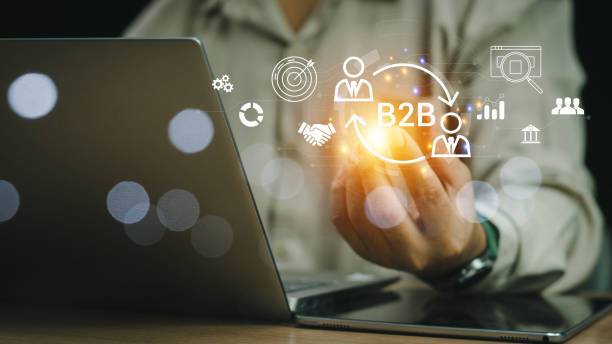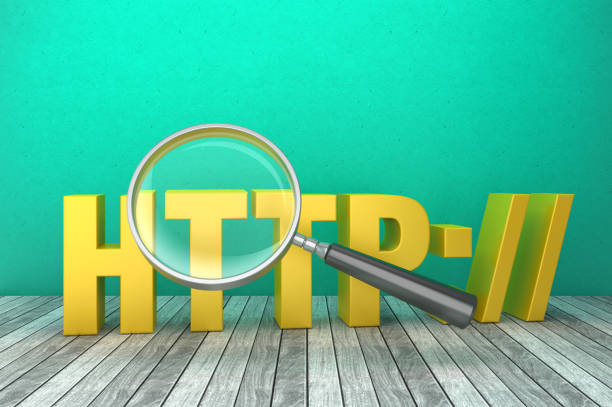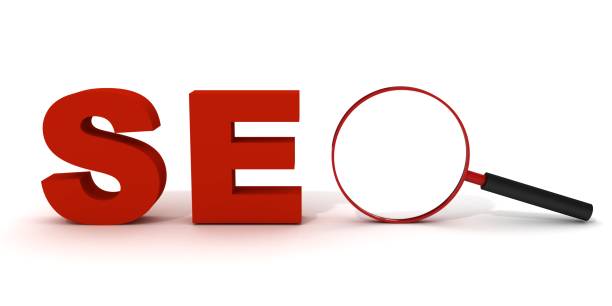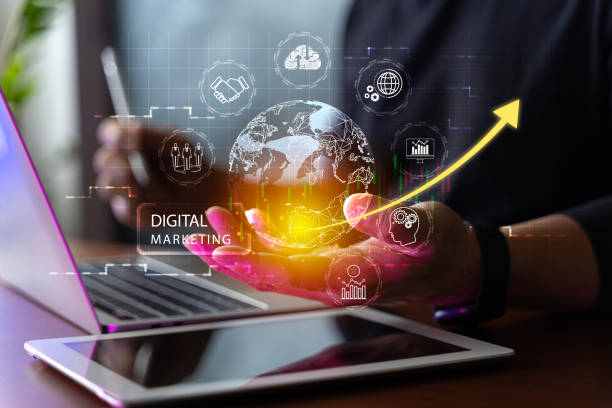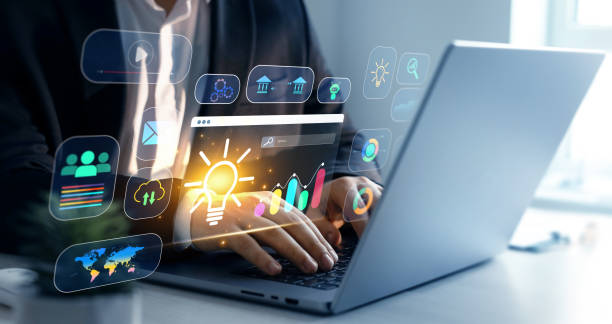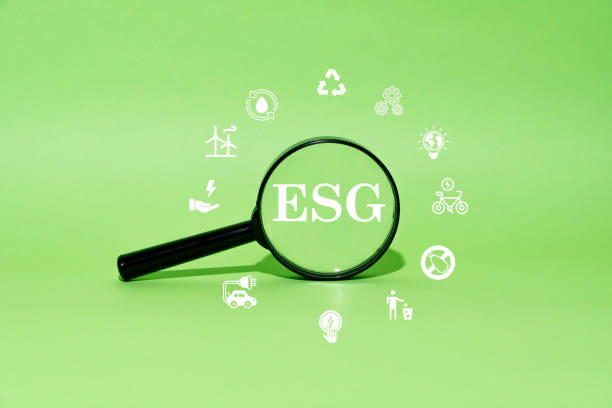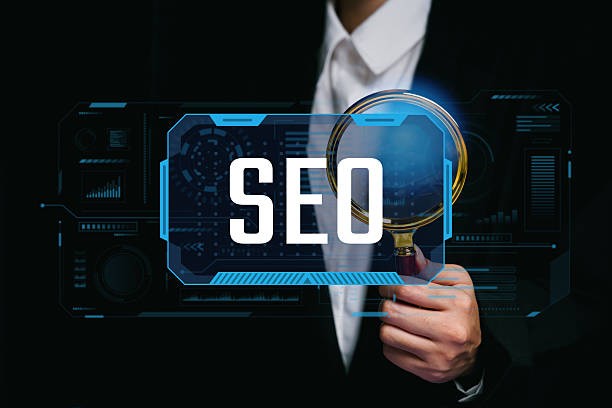An Introduction to On-Page SEO and Its Importance
In today’s competitive digital world, visibility among a multitude of websites is of paramount importance.
#On_Page_SEO or #On_Page_Optimization, is one of the most crucial pillars of success in this field, directly impacting your site’s ranking in search engines.
This educational and explanatory section shows you why focusing on this aspect of website optimization is vital.
On-page SEO includes all the actions you can take within your website to make it more appealing to search engines and users.
From content optimization to the technical structure of the site, everything is part of on-page SEO.
The main goal of on-page SEO is to provide the best possible user experience and to send clear signals to search engines about your content’s topic and quality.
This process not only helps improve site rankings but also attracts more targeted traffic and increases conversion rates.
Without a strong on-page SEO strategy, even the best content may never reach its intended audience.
Therefore, understanding and correctly implementing the principles of on-page SEO is essential for any online business and website.
Tired of your company’s website not getting the visibility it deserves and losing potential customers? Solve this problem forever with professional and effective website design by Rasavab!
✅ Increase brand credibility and earn customer trust
✅ Attract targeted sales leads
⚡ Contact us now for a free consultation!
Keywords and Quality Content: The Cornerstones of On-Page SEO
After understanding the overall importance of on-page SEO, it’s time to examine its main elements.
#Keywords and #Quality_Content are two inseparable and vital elements in any on-page SEO strategy.
Choosing the right keywords is the first step in producing content that is both appealing to users and noticed by search engines.
This process requires a precise analysis of user behavior and their search queries.
After identifying target keywords, it becomes crucial to produce content that naturally incorporates these keywords without overstuffing.
Quality content means content that adds real value to the reader, answers their questions, and engages them.
This type of content not only keeps readers on your site longer but also encourages them to interact more and share, which in itself are positive signals for on-page SEO ranking.
Intelligent use of keywords in titles, meta descriptions, headings, and the body of the text, without compromising flow and readability, is one of the basic principles of on-page optimization.
This approach ensures that your site is both understandable to Google’s algorithms and provides an excellent user experience, both of which are essential for success in on-page SEO.
Technical Aspects of On-Page SEO: Site Structure and Infrastructure
To achieve powerful on-page SEO, the technical aspects of the website must also be considered.
#Site_Structure and #Mobile_Friendliness are key factors that help search engines easily crawl and index your site, and also provide users with a flawless user experience.
This specialized section focuses on these items.
A logical and hierarchical URL structure, the use of HTTPS for security, and having a complete XML Sitemap are among the things that help with the technical optimization of on-page SEO.
Additionally, mobile-friendliness is no longer an option, but a necessity.
Given the significant increase in mobile device usage for internet access, Google has also prioritized the mobile version of websites.
Page loading speed, which is part of Core Web Vitals, also plays a vital role in on-page SEO.
Websites that load quickly provide a better user experience and achieve higher rankings in search results.
Below, you will find a table of the technical on-page SEO checklist:
| On-Page SEO Technical Element | Description | Importance |
|---|---|---|
| Logical URL Structure | Short, readable URLs including keywords | Helps search engine crawl and understand the topic |
| HTTPS Protocol | Using an SSL certificate for security | Ranking factor and increases user trust |
| XML Sitemap | A list of all important site pages for search engines | Helps in faster and more complete page discovery |
| Robots.txt File | Controls search engine crawler access to pages | Prevents crawling of unimportant or duplicate pages |
| Mobile Compatibility | Responsive design and proper performance on mobile devices | Essential for mobile ranking and user experience |
| Page Loading Speed | Time required for full page content display | Important ranking factor and reduces bounce rate |
These elements are fundamental for strong and sustainable on-page SEO and should be continuously monitored and optimized.
Content Optimization for On-Page SEO: Quality and Readability
After addressing the technical aspects, it’s time to delve deeper into #Content_Readability and #Multimedia in on-page SEO.
Your content should not only be informative but also presented in a way that users enjoy and can easily understand.
This is a comprehensive guide for producing content that is both optimized for search engines and engaging for humans.
Using short paragraphs, simple sentences, bulleted and numbered lists, and multiple subheadings (H2, H3 and…) significantly helps improve content readability.
Additionally, incorporating relevant images, videos, and infographics not only makes the content more engaging but also helps users better understand the topic and increases their dwell time on the page.
These factors indirectly positively impact on-page SEO.
Regularly updating old content and ensuring its freshness and relevance is also a powerful on-page SEO strategy.
Google prioritizes fresher and more up-to-date content, so reviewing and improving past articles can help improve your site’s ranking.
The main goal of content optimization in on-page SEO, is to provide an unparalleled user experience that keeps users satisfied and encourages them to stay and browse more on your site.
This is what Google is looking for: valuable content that meets user needs.
Did you know that poor online store design can drive away up to 70% of your potential customers? Rasavab transforms your sales with professional and user-friendly e-commerce website designs.
✅ Significant increase in sales and revenue
✅ Full optimization for search engines and mobile
⚡ [Get a free consultation from Rasavab]
Best On-Page SEO Practices: Meta Tags and Headings
For continuous improvement of on-page SEO, paying attention to the details of #Meta_Tags and #Headings is crucial.
These elements provide important information to both search engines and users and can significantly impact click-through rate (CTR) and content comprehension.
This section provides a complete explanation on how to optimize these factors.
The Title Tag is the most important meta tag; it should include the main keyword, be appealing, and encourage users to click.
The Meta Description, although not a direct ranking factor, plays a significant role in attracting user attention in search results and should be an enticing summary of the page’s content, also including keywords.
Correct use of headings (H1-H6) is very important in structuring content.
H1 should be used only once per page and contain the main keyword.
H2 and H3 headings are used to divide content into smaller, more readable sections and can include secondary keywords.
This structuring not only aids readability but also helps search engines understand the hierarchy and main and sub-topics of your content.
Optimizing these elements in on-page SEO, is a fundamental step to increase your website’s visibility and effectiveness in search results and directly impacts your site’s on-page SEO.
Click here to preview your posts with PRO themes ››
Internal Linking Strategy and Its Impact on On-Page SEO
One of the most powerful tools available in the on-page SEO toolbox is #Internal_Linking.
This strategy not only helps search engines better understand your site’s structure but also helps distribute #Page_Authority (Link Equity) throughout the site and improves user experience.
This section provides a practical tutorial on how to implement an effective internal linking strategy.
Internal linking means creating links from one page to another within the same website.
This helps users easily navigate between related pages and gain more information, which in turn leads to increased time on site and reduced bounce rates.
For search engines, internal links also play an important role in discovering new pages and understanding the thematic connection between different pages.
The more internal links a page receives from authoritative pages, the more authority it gains, and the higher its chances of ranking for relevant keywords.
Using descriptive and keyword-rich Anchor Texts is very important.
Anchor text should clearly indicate what the destination page is about.
A strong internal linking strategy can help improve your site’s crawlability and indexability and ultimately lead to stronger on-page SEO and higher rankings in search results.
Image Optimization for On-Page SEO: Increasing Speed and Efficiency
Alongside text content, #Image_Optimization is also an important part of on-page SEO that is often overlooked.
Images can enhance the visual appeal of your site, but if not properly optimized, they can severely slow down page loading speed and harm the user experience.
This section provides practical guidance for optimizing images to improve on-page SEO.
Key tips include reducing image file size without significant quality loss, choosing the appropriate format (such as WebP for the web), and using descriptive and keyword-rich #Alt_Text.
Alt text is not only crucial for search engines to understand image content but also important for accessibility, helping users who cannot view images (e.g., due to visual impairments or slow internet speeds) to understand the visual content.
Using descriptive file names for images (e.g., “on-page-seo-optimization.jpg” instead of “IMG_1234.jpg”) is also recommended.
Furthermore, implementing Lazy Loading for images can help improve initial page load speed, as images are only loaded when the user scrolls to the relevant section.
With these measures, your images will not only contribute to faster page loading but also actively play a role in improving on-page SEO and increasing your site’s visibility in image search results.
Below is a table of the image optimization checklist:
| Image Optimization Element | Description | Impact on On-Page SEO |
|---|---|---|
| File Size Compression | Reducing image size without noticeable quality loss | Increases page loading speed |
| Choosing the Right Format | Using WebP, JPEG for photos, PNG for graphics | Improves performance and speed |
| Alt Text | Brief explanation of image content with keywords | Helps search engines understand the image and accessibility |
| Descriptive File Name | Naming image files with relevant keywords | More signals to the search engine |
| Appropriate Dimensions | Using suitable dimensions for web display | Prevents browser resizing, improves speed |
| Lazy Loading | Loading images only when needed | Increases initial page loading speed |
Click here to preview your posts with PRO themes ››
By following these tips, you can turn your images into a valuable asset for on-page SEO.
Page Speed and Core Web Vitals for On-Page SEO Improvement
Page loading speed and Core Web Vitals have quickly become vital #Site_Speed factors for on-page SEO.
Google has clearly stated that these metrics play a role in page ranking and directly affect user experience.
This section provides an in-depth analysis of the importance of #Core_Web_Vitals and how to optimize them to boost your on-page SEO.
Core Web Vitals include three main metrics: LCP (Largest Contentful Paint), which measures the loading time of the largest content element; FID (First Input Delay), which indicates the browser’s responsiveness to the user’s first interaction; and CLS (Cumulative Layout Shift), which evaluates the visual stability of the page.
Improving these metrics directly leads to reduced bounce rates, increased time on site, and overall improved user experience, all of which are positive signals for Google’s algorithms.
Using Content Delivery Networks (CDNs), optimizing CSS and JavaScript code, compressing images, and enabling browser caching are among the actions that can significantly increase your site’s speed.
Tools such as Google PageSpeed Insights and Google Search Console can help you identify issues and provide solutions for improving Core Web Vitals.
Focusing on these technical aspects not only helps improve your on-page SEO ranking but also ensures visitors have a more enjoyable user experience on your site.
Did you know that 94% of a first impression of a company is related to its website design?
Rasavab helps you make the best first impression by providing professional corporate website design services.
✅ Create a professional and trustworthy image for your brand
✅ Easier attraction of potential customers and improvement of online presence
⚡ Get a free corporate website design consultation
Monitoring and Analysis of On-Page SEO: Tools and Reporting
To ensure the effectiveness of your on-page SEO strategy and identify opportunities for improvement, regular #SEO_Analysis and #Reporting are essential.
This section, with a news-oriented and practical approach, introduces you to key tools and metrics that you should monitor.
Tools like Google Analytics and Google Search Console are two main pillars for monitoring site performance and on-page SEO.
Google Analytics provides detailed information about site traffic, user behavior, bounce rate, time on page, and traffic sources.
By analyzing this data, you can identify the strengths and weaknesses of your content and optimize your on-page SEO strategies accordingly.
Google Search Console also provides vital information about your site’s performance in search results, including the keywords users use to find your site, crawling and indexing issues, and Core Web Vitals status.
In addition to these tools, using third-party SEO tools such as Ahrefs, Semrush, or Moz can also help you analyze competitors, identify new keywords, and monitor rankings.
Regular reporting of this data allows you to observe trends, detect algorithm changes, and make more informed decisions for continuous improvement of your on-page SEO.
This continuous monitoring ensures that your on-page SEO efforts remain effective and up-to-date.
Future Trends and Advanced Strategies in On-Page SEO
The world of on-page SEO is constantly changing, and to stay ahead of the competition, one must keep pace with #Future_SEO and #Artificial_Intelligence.
This section, presented as thought-provoking content, explores emerging trends and advanced strategies that can take your on-page SEO to the next level.
Artificial Intelligence (AI) and machine learning play an increasing role in Google’s algorithms, influencing how content is understood and how search results are presented.
Optimizing for voice search, which has gained popularity with the rise of smart assistants, is one of these important trends.
This requires focusing on longer keywords and more natural language that users employ in their daily conversations.
Furthermore, the concept of E-A-T (Expertise, Authoritativeness, Trustworthiness) has gained increasing importance in Google’s algorithms.
To improve your site’s E-A-T, you should clearly demonstrate the expertise of your authors, your information sources, and the overall trustworthiness of your website.
Video content also continues to grow, and optimizing it for search (Video SEO) is of high importance.
Ultimately, focusing on the overall user experience and providing high-quality, valuable content for the audience will always be the backbone of any successful on-page SEO strategy, regardless of algorithmic changes.
This approach ensures that your site is prepared for the future of SEO.
Click here to preview your posts with PRO themes ››
Frequently Asked Questions
| Question | Answer |
|---|---|
| What is On-page SEO? | On-page SEO refers to a set of actions performed within your website to improve its ranking in search engine results. This includes content optimization, site structure, and HTML code. |
| Why is On-page SEO important? | On-page SEO helps search engines understand your page’s content and determine if your content is relevant to searchers. It is the foundation of any successful SEO strategy. |
| What are the key elements of On-page SEO? | Page title (Title Tag), meta description, keyword usage, image optimization, heading structure (H1, H2, …), internal linking, and content quality are key elements. |
| How to optimize the Title Tag? | The title tag should include the main keyword, be attractive and encouraging to click, and have a length of 50 to 60 characters (or appropriate pixels) to be fully displayed in search results. |
| What role does the Meta Description play in On-page SEO? | The meta description is a summary of the page’s content displayed below the title in search results. Although it does not directly affect ranking, it helps SEO by increasing the click-through rate (CTR). |
| What is the importance of using heading structure (H1, H2, H3) in On-page SEO? | Headings structure the page’s content and make it easier to read. H1 is usually the main title of the page and should include the keyword. H2 and H3 are used to organize subsections and help search engines understand the content hierarchy. |
| How to effectively use keywords in content? | Keywords should be used naturally and logically throughout the content, including the introduction, body, and conclusion. Avoid excessive keyword stuffing. |
| What steps are involved in optimizing images for On-page SEO? | It includes compressing images to reduce size, using descriptive file names, adding appropriate Alt Text, and optimizing the image title and description. Alt Text is crucial for accessibility and helping search engines understand image content. |
| What is Internal Linking and what are its benefits? | Internal linking means creating links from one page on your website to another page on the same website. This helps users easily navigate your site, distributes page authority throughout the site, and helps search engines better understand your site’s structure. |
| What is the importance of content quality in On-page SEO? | High-quality, accurate, comprehensive, and valuable content for users is the cornerstone of on-page SEO. Search engines prefer content that meets user needs. Quality content leads to longer dwell time and reduced bounce rates, which are positive SEO signals. |
And other advertising services from Rasavab Advertising Agency
Smart Direct Marketing: An innovative platform for improving online growth with intelligent data analysis.
Smart Website Development: An innovative platform for improving sales growth with intelligent data analysis.
Smart SEO: An innovative platform for improving online growth with intelligent data analysis.
Smart Advertorial: A fast and efficient solution for campaign management focusing on custom programming.
Smart Advertorial: An innovative platform for improving customer acquisition with marketing automation.
And more than hundreds of other services in the field of internet advertising, advertising consultation, and organizational solutions
Internet Advertising | Advertising Strategy | Advertorial
Sources
Comprehensive On-Page SEO Tutorial
Increase Website Traffic with SEO
? To reach the pinnacle in the digital world, trust Rasavab Afarin. By providing comprehensive digital marketing services, including multilingual website design, SEO, and targeted advertising, we introduce your business to a global audience and establish a powerful presence for you.
📍 Tehran, Mirdamad Street, next to Bank Markazi, Kazeroon Jonubi Alley, Ramin Alley, No. 6

